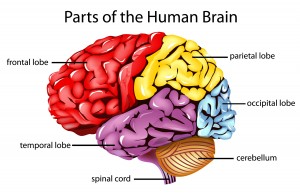For the first time researchers have found dramatic evidence that an older person can learn language like a child and even enhance talents, like music and art. They’ve found a simple pill may open (unglue) brain circuitry making learning easier.
by J. Bardin – Nature, 2012 – xa.yimg.com
Growing up in the suburbs of New York City, Takao Hensch learned German from his father, Japanese from his mother and English from the community around him. “I was always wondering,” he says, “what is it that makes it so easy to learn languages when you’re young, and so hard once you begin to get older?”
 Today, as a neuroscientist at Boston Children’s Hospital in Massachusetts, Hensch is at the forefront of efforts to answer that question in full molecular detail. Language acquisition is just one of many processes that go through a ‘sensitive’ or ‘critical’ period — an interval during development when the neural circuits responsible for that process can be sculpted, and radically changed, by experience (see ‘Open and shut’). During critical periods, children can make rapid progress at discerning facial features that look like their own, recognizing spoken language and locating objects in space. But within a few months or years, each window of opportunity slams shut, and learning anything new in that realm becomes difficult, if not impossible.
Today, as a neuroscientist at Boston Children’s Hospital in Massachusetts, Hensch is at the forefront of efforts to answer that question in full molecular detail. Language acquisition is just one of many processes that go through a ‘sensitive’ or ‘critical’ period — an interval during development when the neural circuits responsible for that process can be sculpted, and radically changed, by experience (see ‘Open and shut’). During critical periods, children can make rapid progress at discerning facial features that look like their own, recognizing spoken language and locating objects in space. But within a few months or years, each window of opportunity slams shut, and learning anything new in that realm becomes difficult, if not impossible.
Or maybe not. What Hensch and others in the small, but rapidly advancing, field of critical-period research are finding is that those windows can be pryed back open. “For the first time, we are beginning to understand the biology that underlies critical periods,” says Hensch. And that understanding is suggesting ways to intervene in various neural disorders, including intractable conditions such as adult amblyopia, in which information from one eye is not correctly processed by the brain, and possibly even autism. The work could even lead to ‘plasticity pills’ that enhance learning or help to wipe out traumatic memories.
“What’s so interesting about Takao’s work is that he has shown that even if you miss these critical periods, you still may be able to go back in and fix things,” says Charles Nelson, a neuroscientist at Boston Children’s Hospital, who studies the developmental effects of early social deprivation on orphans in Romania. “The idea that you could intervene later and make up for lost time is compelling.”
The first scientist to popularize the notion of a developmental critical period was the Austrian biologist Konrad Lorenz, whose pioneering work in animal behaviour earned him a share of the 1973 Nobel prize. In the 1930s, Lorenz showed that if he took on the role of a mother goose within a few hours after goslings hatched, the baby geese would follow him as though he were their mother until adulthood. He called this process ‘imprinting’.
DOGMA, INHIBITED
The first scientists to explore the neural basis of a critical period were David Hubel and Torsten Wiesel, neurophysiologists at Harvard Medical School in Boston who carried out work on the visual system in the early 1960s. First they discovered that in the adult brain, many cells in the visual cortex respond to signals from only one eye. Then they showed that in kittens that had had one eye sutured shut, individual cells that normally would have fired in response to the closed eye instead responded to the open eye, eventually causing amblyopia1. Shutting the eye of an adult cat did nothing, indicating that cells in the visual cortex were programmed during a key developmental window in the first few months of life.
Hubel and Wiesel lacked the tools to analyse how this programming worked at the molecular level, but they earned a Nobel prize in 1981 for their discovery. Their findings also inspired Hensch, during the 1980s, to change his undergraduate major from computer science and artificial intelligence to neurobiology. “Hubel and Wiesel’s work made me realize that there was just so much we didn’t know about the actual biology of the brain,” he says.
Hensch got a chance to learn more when he began his PhD work in Michael Stryker’s neuroscience laboratory at the University of California, San Francisco (UCSF). Stryker’s group, like most researchers in the field, studied the critical period of the visual system as a model of critical periods in general, and had published a series of papers hinting at a new approach to understanding it.
For years, researchers had assumed that the brain’s ‘plasticity’, or its ability to learn during critical periods, was the work of excitatory neurons, which encourage neighbouring neurons to fire. But Stryker’s work suggested some kind of involvement by inhibitory interneurons, brain cells that dampen activity in their neighbours. Stryker’s team had found that, in kittens, a drug that increases inhibition during the critical period made the visual cortex resistant to Hubel and Wiesel’s trick: many neurons in that region began to fire in response to the closed eye rather than the open one2.
Hensch followed up on this work in a collaboration with Michela Fagiolini and her colleagues at the RIKEN Brain Science Institute in Wako, Japan. The researchers looked at the critical period in genetically engineered mice that had slightly reduced levels of γ-aminobutyric acid (GABA), an inhibitory neurotransmitter.
The effect of that reduction was far greater than either Hensch or Stryker had imagined: whereas control mice went through a typical critical period and developed amblyopia when one eye was blocked, mice with GABA deficiencies did not develop amblyopia, or have a critical period at all. Hensch and his colleagues were able to restore plasticity by administering a benzodiazepine, a drug that enhances the inhibitory effect of GABA (ref. 3).
Inhibition, the authors concluded, much of our neural circuitry is fixed during childhood. Researchers are finding ways to unglue it, raising hopes for treating many brain disorders.


